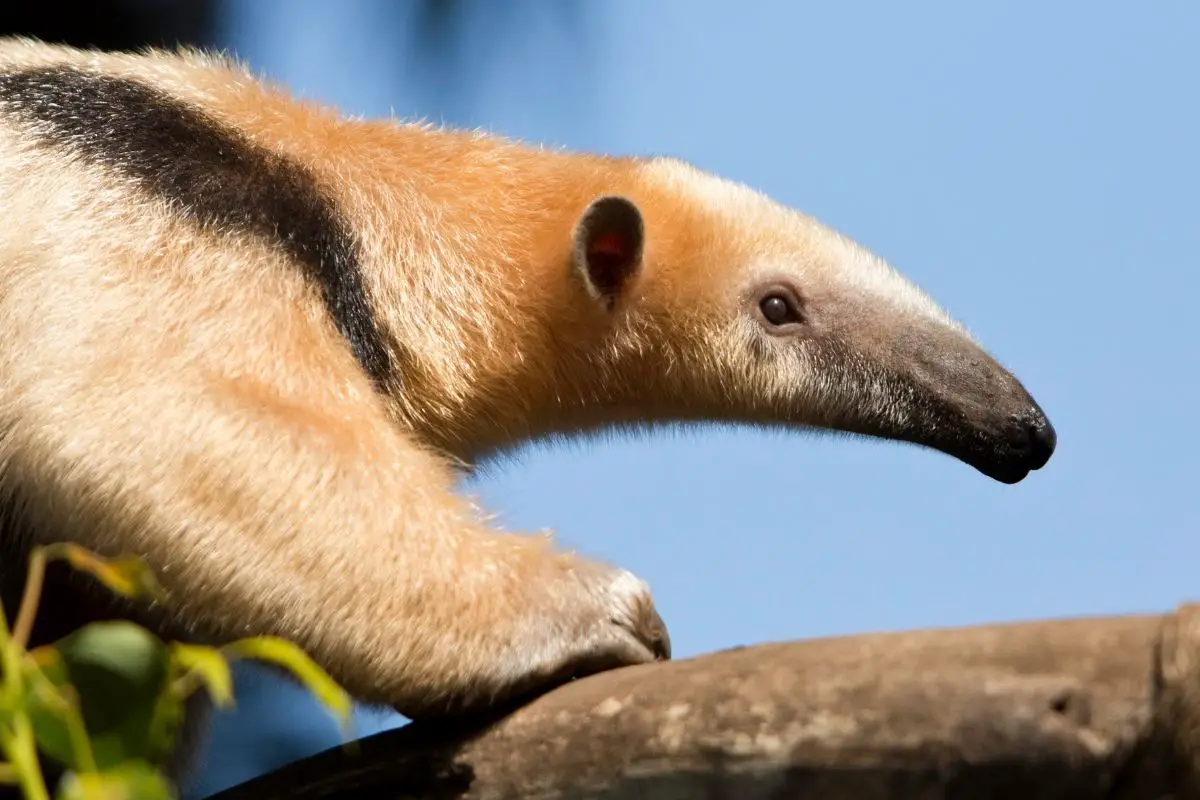The anteater is a unique and fascinating animal unlike anything else found in nature. These large furry mammals may appear dangerous at first glance but are usually quite shy. Although they do have sharp claws that can be deadly if provoked, for the most part, they are not aggressive animals.
Anteaters have no teeth and instead feast on ants and termites using their large, flexible tongue. Many readers may be shocked to learn that not all anteaters are the same. There are actually four species of anteaters found in the wild.
Here is a look at the four types of anteaters and how they differ.
1. Northern Tamandua
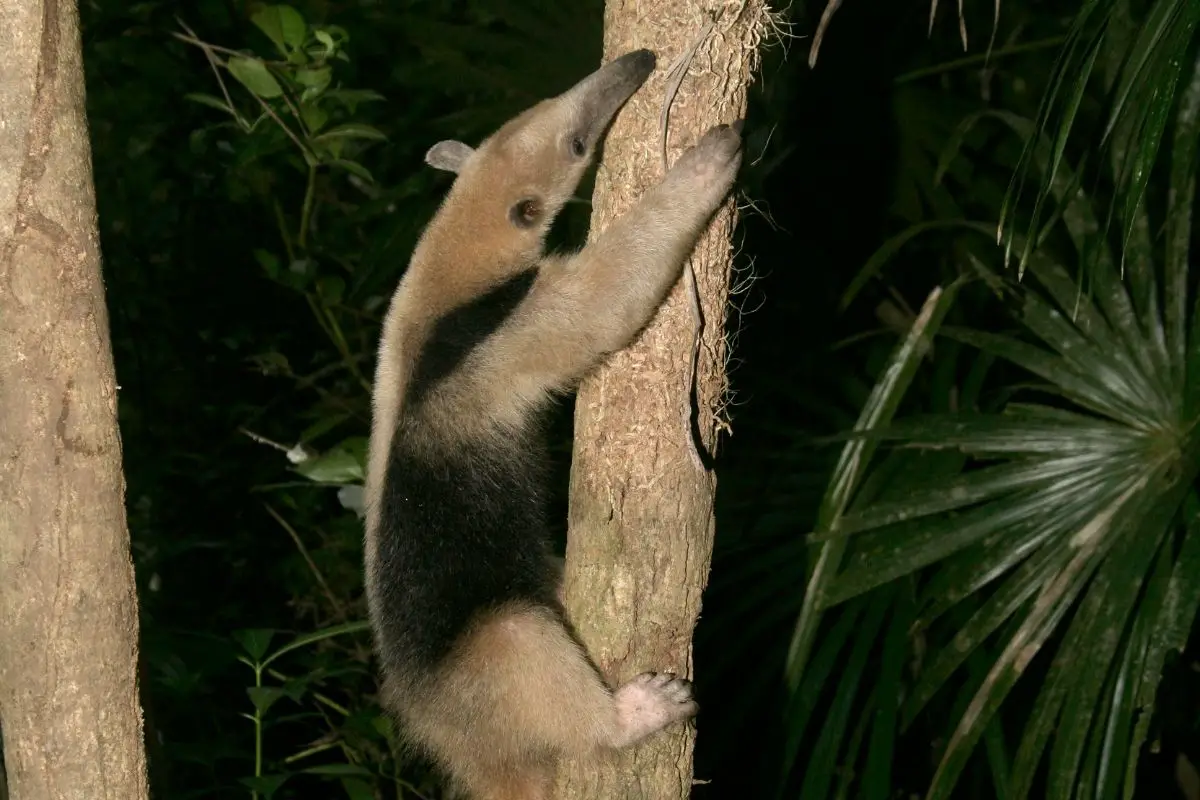
Tamandua Mexicana, also known as the Northern Tamandua, is a medium-sized species of anteater known for its pale yellow fur, small eyes, and long snout. The northern Tamandua is a close relative of the Southern Tamandua, another type of anteater found in a different part of the world.
- Natural Habitat: The northern Tamandua is known to inhabit forests, swamps, and grasslands in Southern Mexico, Central America, Columbia, Venezuela, Equator, and Peru. There are four separate subspecies of Northern Tamandua covering unique habitats.
- The T.m. Mexicana is native to Mexico, Guatemala, Belize, Honduras and El Salvador
- The T.m. Instabilis is native to Venezuela and northern Columbia
- The T.m. Opistholeuca is native to Nicaragua, Costa Rica, Panama, and parts of Columbia
- The T.m. Punensis is native to Ecuador and Peru
The northern Tamandua can be found in various types of forests within these regions, including mangrove swamps, evergreen, and deciduous forests, savannas, and thorn scrub. They are often found near rivers and streams and can live on the ground or in trees, and they will usually make a nest in a hollow tree, log, or hole in the ground.
- Diet: The Northern Tamandua feasts primarily on ants and termites (where the name anteater comes from). They consume around 9,000 ants per day. They locate ant and termite colonies by the scent and use their sharp claws to disrupt the nest and suck up as many as possible. On occasion, they may consume tiny bits of fruit, but they are primarily carnivores.
- Lifespan: The average lifespan of the Northern Tamandua is around 9.5 years. However, the oldest Northern Tamandua on record died at age 16 while in captivity.
- Sleep Behavior: The Northern Tamandua is a nocturnal animal; however, they can often be active during the day. Their exact habits depend on the individual animal, as some are more active at night and others during the day. They are only active for about 8 hours out of the day, and the rest of the time they spend sheltering. They usually spend about 40% of their time in trees.
- Nomadic vs Territorial: The northern Tamandua is relatively nomadic. Due to the harsh defense mechanisms of the insects they eat, they must move from colony to colony to find enough sustenance. That forces them to move around and create new nests as they go. They are solitary creatures once they leave their mothers after the first year and tend to move from place to place to find new food and shelter.
- Interesting Facts: Tamanduas have natural predators, including ocelots, jaguars, and harpy eagles. They often use their large claws to fend off attackers and release a foul odor as a defense mechanism, similar to a skunk.
2. Southern Tamandua
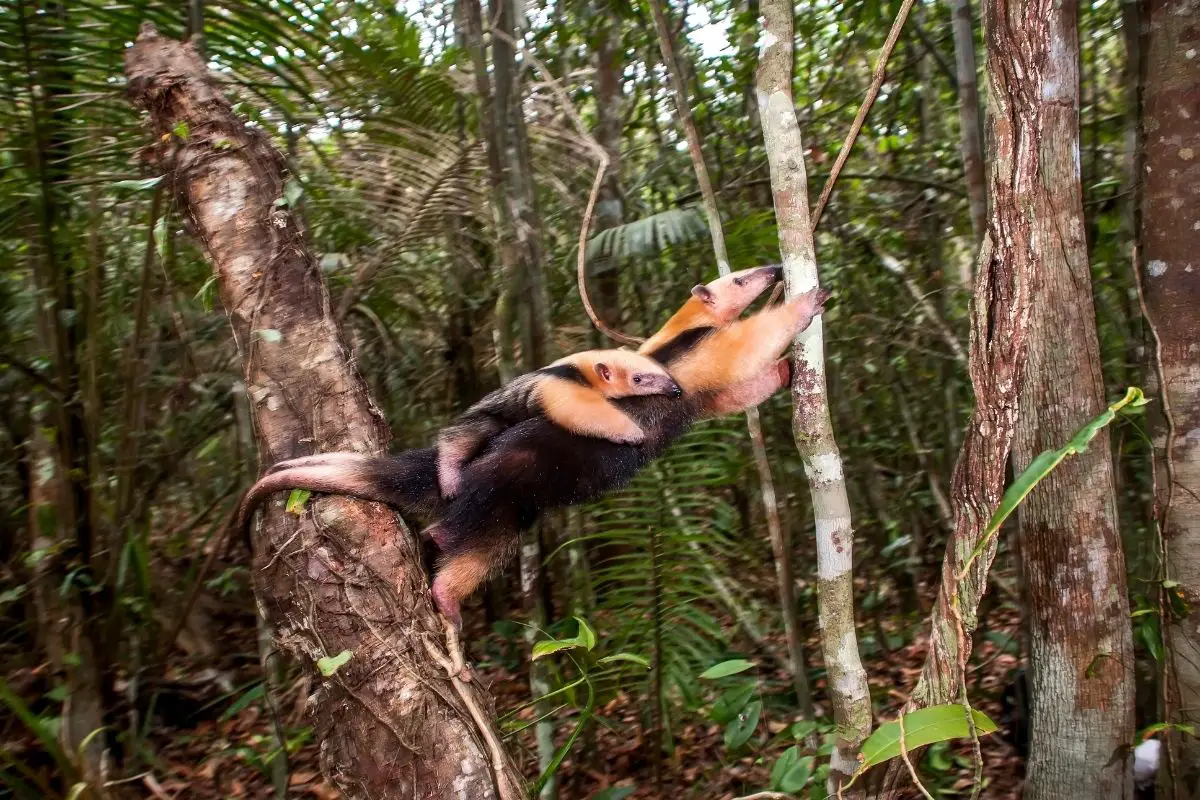
The cousin of the Northern Tamandua, the Southern Tamandua, is a species of anteater native to South America. Also known as the lesser anteater or the collared anteater, the Southern Tamandua is known for its small stature and mix of tan and black fur. The southern Tamandua has many features and behavior patterns similar to its relative, the Northern Tamandua.
- Natural Habitat: The Southern Tamandua can be found in dry and wet forests throughout South America. They live in tropical forests, arid savannahs, mangrove swamps, and mature or disturbed secondary forests, typically near a river or stream. Southern Tamanduas are native to Guyana, Trinidad, Tobago, Suriname, French Guiana, Brazil, Paraguay, and parts of Uruguay, Argentina, Bolivia, Peru, Ecuador, Columbia, and Venezuela.
Just like its relative, there are four recognized subspecies of Southern Tamandua.
- The T.t. tetradactyla is native to southern and eastern Brazil
- The T.t. nigra is native to northern Brazil, Colombia, Venezuela, and the Guayanas
- The T.t. quichua is native to Peru, Equador and western Brazil
- The T.t. straminea is native to Southern Brazil, Paraguay, and Bolivia.
The Southern Tamandua is also mainly solitary and known to nest in hollow trees or the abandoned habitats of other animals.
- Diet: The Southern Tamandua primarily eats ants, termites, and occasionally bees. In captivity, they may also eat small qualities of fruit and meat. They mainly feast on army ants, carpenter ants, and Nasutitermes while avoiding ants with strong defense mechanisms like leaf cutter ants.
They can locate different ant colonies by the smell, then rip them open using their claws. They frequently have to move from colony to colony if their prey’s defense mechanisms become too painful for the Tamandua to endure.
- Lifespan: Similar to its northern cousin, the average lifespan of a Southern Tamandua is around nine years. Although, a Southern Tamandua named Izzy who lived at the Sacramento Zoo lived to be 15.
- Sleep Behavior: Like the Northern Tamandua, the Southern Tamandua is both nocturnal and diurnal. They tend to be most active at night but can also be active during the day, spending about 13-64% of their time foraging in trees.
- Nomadic vs. Territorial: The Southern Tamandua often displays nomadic characteristics. They are solitary animals who are often forced to move around to find new ant and termite colonies. They are not known to travel long distances but often move from place to place, foraging in trees and hunting for new sources of nourishment.
- Interesting Facts: The most significant distinguishing factor between the Southern and the Northern Tamandua is the long ears of the former. Southern Tamanduas have ears that are about 5 cm long, whereas the ears of the Northern Tamandua are typically about 4 cm.
3. Silky Anteater
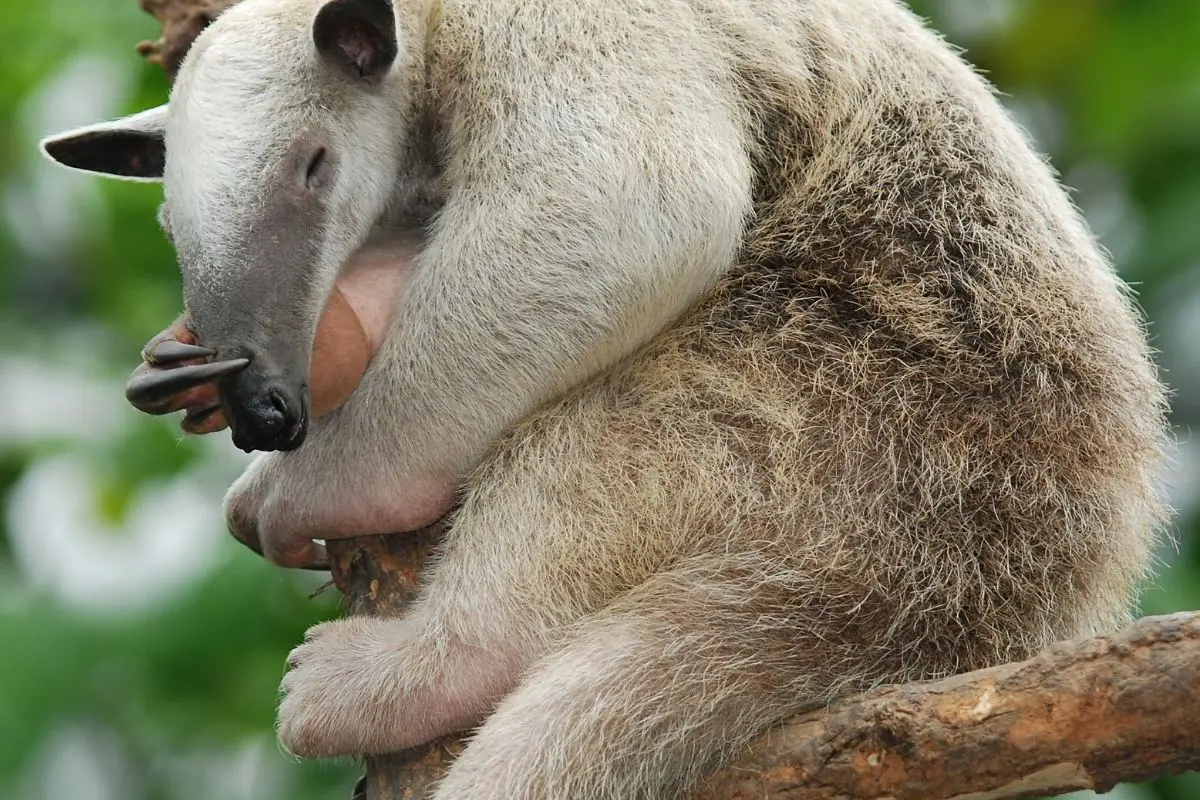
Clyclopes didactylus, also known as the silky anteater or pygmy anteater, is the smallest living variety of anteater. They are typically only about one foot long and weigh less than a pound. The silky anteater is named after the silky luster of its fur.
They are the only living species in the Cyclopedidea family of anteaters.
- Natural Habitat: The silky anteater is found throughout Southern Mexico, Central America, and South America, from the Yucatan region to Northern Brazil. The silky anteater lives in various forest habitats, including semi-deciduous, tropical evergreen, and mangrove forests. But, unlike the Tamandua, the silky anteater is almost exclusively arboreal and known to live entirely in trees.
At least seven species and subspecies of silky anteater, each of which inhabits a different region.
- Diet: The silky anteater is commonly known to feast on arboreal ants and termites. However, on occasion, they are also known to eat coccinellid beetles. They will consume anywhere from 100 to 8000 ants per day.
They are known to forage in trees looking for ant colonies and use their long, flexible tongue to invade their nests.
- Lifespan: The silky anteater has a much shorter lifespan than the Tamandua and is only known to live about two years. Living in captivity can slightly prolong their lifespan, but they typically will not live longer than 2.5 years.
- Sleep Behavior: The silky anteater is almost exclusively nocturnal and known to nest in trees. They are rarely seen at ground level and are very slow-moving, similar to a sloth. They commonly inhabit the Ceiba tree du to its large seed pods that look very similar to the shiny coat of the silky anteater.
This gives the animal a natural camouflage against predators like the harpy eagle, eagle-hawk, and spectacled owl.
- Nomadic vs Territorial: The silky anteater is known to maneuver across the canopy layer of a tropical rain forest. Like most anteaters, they are solitary creatures and are known to move from spot to spot, although they rarely descend to ground level and never sleep in the same tree for more than two consecutive days. Their long, curved claws help them navigate from tree to tree with ease.
- Interesting Facts: the silky anteater can also be found on the island of Trinidad, where they are known as the “poor me one”. This nickname comes from their solitary nature and because the locals attributed the sorrowful moan of a native bird to the animal. Although the silky anteater is mostly silent, the name still stuck.
4. Giant Anteater
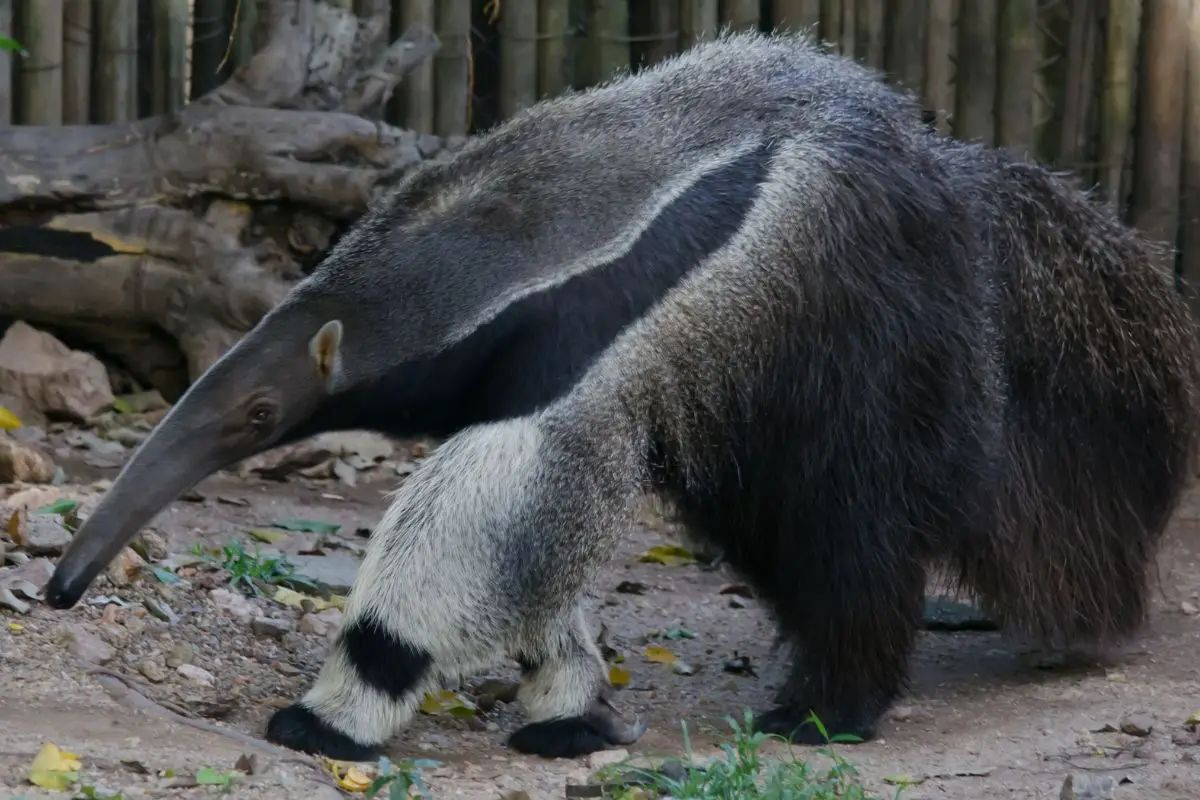
The largest member of the anteater family, the Myrmecophaga tridactyla, also known as the giant anteater, is a mammal known for its long snout and uniquely patterned fur. The giant anteater typically measures 6 to 8 feet long from snout to tail, and males can weigh up to 110 pounds. Due to habitat destruction and other threats, the giant anteater is considered vulnerable by the International Union for Conservation of Nature (although not endangered).
- Natural Habitat: The giant anteater is native to Central and South America, although it is considered extinct in El Salvador, Guatemala, and Uruguay. They are known to live in various environments, including wetlands, grassland, and rainforests. Unlike the other three living species of anteater, the giant anteater is mostly terrestrial due to its size.
They are known to forage in open areas but rest in a wooded area, resting in dense bush or tall grass. They are also known to dig shallow holes for themselves to sleep in.
- Diet: The giant anteater is also an insectivore and feasts mainly on ants and termites. They track their prey using their large snouts, then tear open nests with sharp claws and use their long tongues to collect insects. They typically spend about one minute at each nest and may attack up to 200 per day.
They may eat up to 30,000 insects per day but need to continuously move from nest to nest to avoid chemical attacks and biting. On occasion, the giant anteater may consume beetles and honeybees as well.
- Lifespan: Giant anteaters have the longest lifespan of any species in the anteater family and usually live around 14 years in the wild. In captivity, they can live up to 26 years.
- Sleep Behavior: Giant anteaters can be both nocturnal and diurnal. They tend to be more active at night, especially in warmer months. But when it’s cooler outside, they are often more active earlier in the day. Nearby human activity is another factor that may influence whether they are more active during the day or at night.
- Nomadic vs Territorial: The giant anteater is quite mobile and may travel around 12,000 feet per day. Like all other anteater species, they are primarily solitary creatures, except females who will nurse their children. They often have to be on the move to find new ant colonies to feast on and avoid predators like pumas and jaguars.
- Interesting Facts: The giant anteater is featured in many tales within the folklore of the indigenous tribes in the Amazon River Basin. In one story told by the Shipibo-Conibo people, an anteater challenges a jaguar to a breath-holding contest, then steals his pelt while the jaguar is underwater. The Kayapo people also wear masks of various animals during initiation ceremonies, including one of an anteater.

